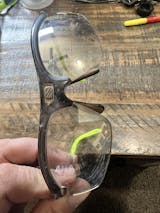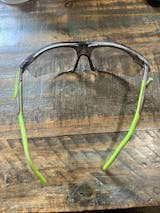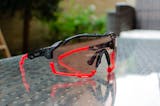Triathlon Gear & Training Tips for New Personal Records

Congratulations! If your first triathlon left you wanting to race again, you’ve gotten the tri bug. Or maybe you’re back to the sport after a long time away. Well, welcome back. Undoubtedly, you want to improve on your last go around. It’s only natural. That’s where we want to help. Follow our guidance below to swim, bike, and run faster than before.
Get Help and Train Smarter
Many triathlon novices think they don’t need a tri coach to get in shape for a race — that only serious athletes need coaches. It doesn’t take long to discover that’s not the case. It’s better to think of a coach as an investment in your true potential. A coach can take a lot of the guesswork out of unlocking the athlete inside of you. More importantly, a coach will make your training more efficient, flexible, and effective. They’ll design your training around your life instead of forcing you to adapt to a rigid program. And if you’re feeling drained from your scheduled workouts, your coach will notice and modulate your training to allow you to recover. A pre-packaged training program from a book or a website can’t do that.
It’s also worth noting that coaching may be less expensive than you think. For the cost of an average gym membership, you can work with an AI-powered coaching service that will adapt your workouts’ intensities and durations based on your most recent performance. This way, you enjoy the right balance of hard work and critical recovery time. Even human coaches charge reasonable fees to build your weekly workout schedule and get on a phone call with you for regular check-ins.
The benefits of having a triathlon coach on your side will be felt within weeks, as you will likely find yourself swimming, biking, and running faster than before.
Eat Right, Go Faster
Triathletes, especially Ironman-distance triathletes, need a ton of fuel to power all those hours of training — and even more for the competitions themselves. If you’ve already completed your first event, you learned what foods and fluids worked for you and what did not. Did you discover sports drinks go down easier than energy bars during those multi-hour bike rides? Did you figure out that a big breakfast high in protein and fats, such as eggs and bacon, came back to haunt you during your morning swim workouts? Or did you find out that a calorie deficit left you feeling lethargic and unmotivated to train when you didn't eat enough?
Whenever you finish a race — or a season — look back at your dietary history and see what you can learn from it. For example, try reserving alcohol for recovery days (or nix it altogether in the two months before your race). And test and tweak your race-day nutrition strategy until you’re confident it delivers. Just as you train your muscles and cardiovascular system to propel you through a triathlon, you can train your gut to accept and process fuel and fluids. You want to arrive at a training day/race day with a proven nutrition routine that will power your best performance instead of letting you down.
Upgrade Your Triathlon Gear
From wetsuits and tri-bikes to running shoes and triathlon clothing, the sport offers multitudes of gear upgrades, big and small. While a $4,000+ dedicated, carbon-fiber tri-bike might be the ultimate upgrade, you can start smaller and build out your ultimate tri-gear closet season by season.
Swim
$$$$ Upgrade: Your own triathlon wetsuit
Compared to borrowing or renting a wetsuit for race day, having your own means you can train with it anytime. You know it fits you perfectly, and a good fit gives you a full range of motion and comfort.
$ Upgrade: Better swim goggles
Swim goggles are often an afterthought. They shouldn’t be since they let you see in the water and protect your eyes from debris and accidental kicks to the face during crowded swims. Find a brand and style that stays secure and still feels comfortable after swimming for an hour or more.
Bike
$$$$ Upgrade: A dedicated tri-bike
With its aerobars and disc wheels, the tri-bike is the epitome of a purpose-built speed machine. And it’s expensive. While its performance benefits are undeniable, its cost isn’t a worthy expense for most novice triathletes, who make do with bolt-on aero bars on their bikes. If you’re ready to commit to the sport for years to come, then a tri-bike can be justified.
$$ Upgrade: An affordable triathlon helmet designed for speed and protection
Rudy Project’s Wing aero triathlon bike helmet was created with triathletes in mind. It features ample venting and an integrated visor shield for maximum aerodynamic efficiency. In fact, race results have shown that wearing the Wing could shave nearly four-and-a-half minutes off a full Ironman bike leg.
Run
$$$$ Upgrade: Supershoes
The newest running shoes feature stiff carbon plates on top of a plush foam sole that cushions each step and propels you forward as if you were on springs. But as far as running shoes go, these super kicks come with super prices to match.
$ Upgrade: Triathlon sunglasses
The best triathlon sunglasses will work for all conditions on the run (and on your bike). They’ll protect your eyes from wind, rain, and sun, and with the right color tint, they sharpen focus and clarity while reducing eye strain. Rudy Project’s new Astral shield glasses offer features found on sunglasses that can cost twice as much: 100% UV protection, adjustable nose pads, and temple arms for a custom, comfortable fit. They also have lightweight, sustainable bioplastic construction and a prescription lens option for athletes who need it.














